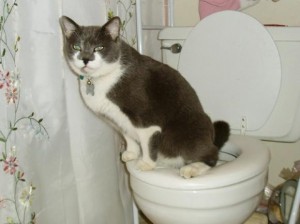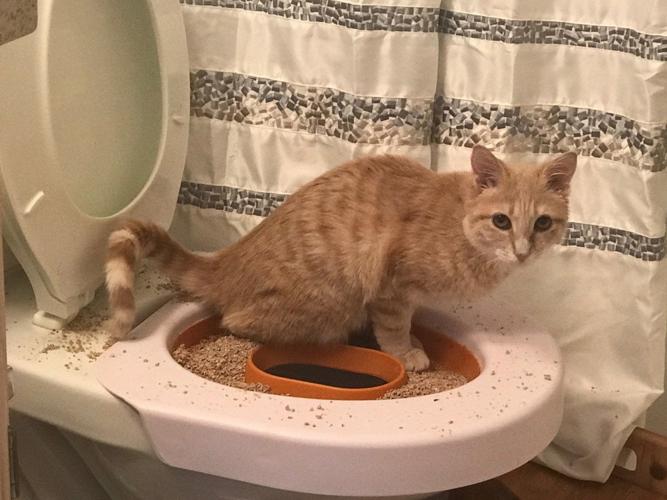Avoid Clogs and Damage: Don't Flush Cat Poop Down Your Toilet - Professional Recommendations
Avoid Clogs and Damage: Don't Flush Cat Poop Down Your Toilet - Professional Recommendations
Blog Article
On this page down the page you can locate additional dependable data on the subject of How to Dispose of Cat Poop and Litter Without Plastic Bags.

Introduction
As pet cat proprietors, it's important to bear in mind how we get rid of our feline good friends' waste. While it may seem practical to purge pet cat poop down the bathroom, this technique can have destructive consequences for both the atmosphere and human health.
Ecological Impact
Purging feline poop introduces dangerous virus and parasites right into the supply of water, presenting a significant danger to water environments. These pollutants can adversely impact aquatic life and compromise water quality.
Health and wellness Risks
Along with environmental concerns, flushing pet cat waste can also pose wellness threats to human beings. Cat feces might have Toxoplasma gondii, a parasite that can create toxoplasmosis-- a possibly extreme ailment, particularly for expecting women and people with damaged immune systems.
Alternatives to Flushing
The good news is, there are much safer and a lot more responsible methods to throw away cat poop. Think about the following alternatives:
1. Scoop and Dispose in Trash
One of the most usual approach of disposing of cat poop is to scoop it into a biodegradable bag and toss it in the garbage. Be sure to make use of a dedicated trash inside story and throw away the waste promptly.
2. Use Biodegradable Litter
Select naturally degradable cat trash made from materials such as corn or wheat. These trashes are eco-friendly and can be securely taken care of in the garbage.
3. Hide in the Yard
If you have a backyard, think about burying cat waste in a marked location away from vegetable gardens and water resources. Be sure to dig deep adequate to stop contamination of groundwater.
4. Set Up a Pet Waste Disposal System
Invest in a family pet garbage disposal system specifically created for pet cat waste. These systems make use of enzymes to break down the waste, reducing smell and environmental influence.
Conclusion
Liable animal ownership extends beyond giving food and sanctuary-- it also entails proper waste administration. By avoiding flushing feline poop down the commode and choosing different disposal techniques, we can decrease our environmental impact and secure human health.
Why Can’t I Flush Cat Poop?
It Spreads a Parasite
Cats are frequently infected with a parasite called toxoplasma gondii. The parasite causes an infection called toxoplasmosis. It is usually harmless to cats. The parasite only uses cat poop as a host for its eggs. Otherwise, the cat’s immune system usually keeps the infection at low enough levels to maintain its own health. But it does not stop the develop of eggs. These eggs are tiny and surprisingly tough. They may survive for a year before they begin to grow. But that’s the problem.
Our wastewater system is not designed to deal with toxoplasmosis eggs. Instead, most eggs will flush from your toilet into sewers and wastewater management plants. After the sewage is treated for many other harmful things in it, it is typically released into local rivers, lakes, or oceans. Here, the toxoplasmosis eggs can find new hosts, including starfish, crabs, otters, and many other wildlife. For many, this is a significant risk to their health. Toxoplasmosis can also end up infecting water sources that are important for agriculture, which means our deer, pigs, and sheep can get infected too.
Is There Risk to Humans?
There can be a risk to human life from flushing cat poop down the toilet. If you do so, the parasites from your cat’s poop can end up in shellfish, game animals, or livestock. If this meat is then served raw or undercooked, the people who eat it can get sick.
In fact, according to the CDC, 40 million people in the United States are infected with toxoplasma gondii. They get it from exposure to infected seafood, or from some kind of cat poop contamination, like drinking from a stream that is contaminated or touching anything that has come into contact with cat poop. That includes just cleaning a cat litter box.
Most people who get infected with these parasites will not develop any symptoms. However, for pregnant women or for those with compromised immune systems, the parasite can cause severe health problems.
How to Handle Cat Poop
The best way to handle cat poop is actually to clean the box more often. The eggs that the parasite sheds will not become active until one to five days after the cat poops. That means that if you clean daily, you’re much less likely to come into direct contact with infectious eggs.
That said, always dispose of cat poop in the garbage and not down the toilet. Wash your hands before and after you clean the litter box, and bring the bag of poop right outside to your garbage bins.
https://trenchlesssolutionsusa.com/why-cant-i-flush-cat-poop/

As a devoted reader about Can You Flush Cat Poop Down The Toilet?, I thought sharing that excerpt was essential. Do you know somebody who is in the market for the niche? Take a moment to share it. Thanks for your time. Don't forget to pay a visit to our blog back soon.
Call Today Report this page